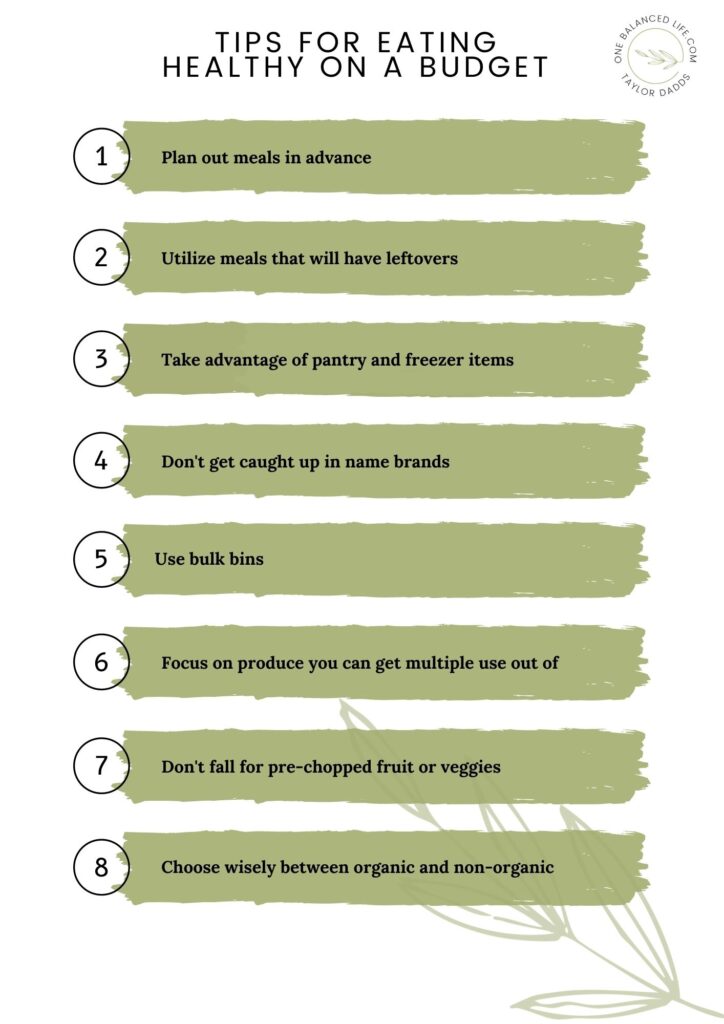
Many people have misconceptions about fad dieting and how it differs from real health advice. The reality is that there are no such diets. While some trendy diets might offer a glimpse at the health benefits of certain foods they may not be sustainable or healthy. These plans are not usually endorsed by the medical community and don't always follow sound nutrition principles. Fad diets can make it difficult to eat healthy and should not be recommended.
These diets may be helpful in losing weight, but they do not promote health. Many of them are based on misleading information. These diets promise fast results with unrealistic expectations. These diets claim that they are the only way to lose weight or provide health benefits. These programs are not scientifically supported and are based on unproven trials and single testimonials. They shouldn't be used as a single method of losing weight and keeping it off.

These diets might also encourage weight loss. Some diets promote certain food groups or particular foods, but they don't last long and are often temporary. These diets will not last long and can lead to weight gain.
Fad diets do not work, as with many things in this life. These temporary weight loss solutions don't last. An example of a fad is the Atkins diet. This allowed people to eat protein (fat), carbohydrates and some other foods, but not bread. The popular Atkins diet was quickly discarded, and is not popular anymore. While the Atkins diet is still very popular, there has been a major shift in its popularity.
Fad diets are not sustainable solutions to weight loss. Fad diets can lead to nutritional deficiencies and slow down the body's metabolism. People who follow a fad diet for too long will keep the calories they eat. This means that they will gain weight when they return to their normal eating habits. Fad diets can make it hard to lose weight and live a healthy life.

Low-carb diets are another popular fad. They're based on animal meat. It is high in protein but low in carbohydrates. This is the opposite of the vegan diet which eats only plant-based foods. Because it is low in carbs, this dietary style can result in weight gain and infertility. You may also be restricted in your exercise choices.
FAQ
Do I need to count calories
You might be asking "What is the best diet?" or "is counting calories necessary?" It depends on many factors such as your current health, personal goals, preferences, and overall lifestyle.
The Best Diet For Me: Which One Is Right?
My current health, my personal goals and lifestyle will determine the best diet for me. There are many diets out there, some good and some bad. Some are better for certain people than others. What can I do to make the right choice? How do I make a good decision?
These questions are addressed in this article. It starts with a brief introduction of the different types of diets available today. Then, the pros and cons of each type of diet are discussed. Finally, we'll look into how to choose the best one for you.
To begin, let's take a quick look at the different types of diets.
Diet Types
There are three types of diets available: ketogenic, high-protein, and low fat. Let's look at each one briefly.
Low Fat Diets
A low fat diet means a diet that reduces the intake of fats. This is done by reducing your intake of saturated oils (butter, cream cheeses, etc.). You can replace them with unsaturated oils (olive oil and avocados) If you want to lose weight fast and easily, then a low fat diet is often recommended. However, this kind of diet may cause problems such as constipation, heartburn, and indigestion. If a person doesn’t receive enough vitamins from their foods, this can lead to vitamin deficiency.
High Protein Diets
High protein diets reduce carbohydrates to favor of proteins. These diets often have higher levels of protein than most other diets. These diets are meant to increase muscle mass, and burn more calories. They may not be able to provide sufficient nutrition for people who need it. Also, they tend to be very restrictive, so they aren't suitable for everyone.
Ketogenic Diets
Ketogenic diets also go by the name keto diets. They are high on fat but low in carbs and proteins. They are commonly used by athletes and bodybuilders, as they allow them train harder and more frequently without getting tired. But, they require strict adherence to avoid negative side effects like nausea, headaches, and fatigue.
Does being cold give you a weak immune system?
According to some, there are two types: people who love winter or those who hate it. It doesn't really matter whether you love winter or loathe it. You might be wondering why it makes you miserable.
The answer lies in the fact that our bodies are designed to function best during warm weather. In fact, we evolved to thrive in hot climates because that's where most of our food sources are located.
However, our environment is quite different than that of our ancestors. We spend much more time indoors, often exposed to extreme temperatures (cold and heat), and we eat foods that are processed rather than fresh.
Our bodies aren’t accustomed to such extremes. This means that we feel tired, sluggish and even sick when we venture outside.
These effects can be reversed, however. One way is to make sure that you stay well-hydrated throughout the day. If you drink plenty of water, you'll help keep your body properly hydrated and flush toxins from your system.
It is important to eat healthy foods. The best way to maintain your body's optimal temperature is by eating nutritious food. This is especially true for people who spend long hours indoors.
It is worth taking a few extra minutes each day to meditate. Meditation helps to calm your mind and body which can make it easier to deal stress and illness.
What causes weight loss as we age?
How do I know if my bodyweight changes?
Weight loss happens when there is less muscle mass and more fat. This means that you must consume more calories than you use daily. A decreased level of activity is the main cause of weight loss. Other reasons include poor eating habits, stress, hormone imbalances, certain medications and illness. A person who has more fat than their muscle mass will experience weight gain. It occurs when people consume more calories per day than they need. The most common causes are overeating, increased activity, hormonal changes, and excessive calories.
We eat less calories than we burn, which is the main reason our bodies lose weight. When we exercise regularly, we increase our metabolism rate which burns off more calories throughout the day. But this doesn't guarantee that we'll lose weight. All that matters is whether we're losing weight or gaining muscles. If we're burning more calories than we're consuming then we're going to lose weight. But, if we consume far more calories than what we burn, then we actually store them as fat.
As we age we tend to be slower in moving and thus we don't move nearly as much. We also tend to eat less food than we did when we were younger. As a result, we gain weight. On the flip side, we tend to have more muscle mass so we look bigger than we really are.
If you don't weigh yourself every week, it's impossible to determine how much weight has been lost. There are many methods to measure your weight. You can gauge your waist size, hips, hips, thighs and arms. Some prefer to use bathroom scales, while others prefer tape measures.
If you want to track your progress, you should try weighing yourself once a week and measuring your waistline once a month. You can also take photos of your self every few months to track how far you've come.
You can also look up your height, weight and body measurements online to determine how much you weigh. You'd likely weigh 180 pounds if you were 5'10 tall and 180 pounds if you were 180lbs.
How can I get enough vitamins
You can obtain most of your daily requirement through diet alone. Supplements can be helpful if you are lacking in any one vitamin. A multivitamin supplement can provide all the vitamins you require. You can also buy individual vitamins in your local drugstore.
Talk to your doctor to find out which foods are rich in vitamins. You can find vitamins K and E in dark green leafy vegetable such as spinach, kale and turnip leaves, as well a variety of sweet potatoes and sweet potatoes.
Ask your doctor if you're not sure how many vitamins you should take. Based on your medical history, and your current health status, your doctor will recommend the right dosage.
How does an antibiotic work?
Antibiotics kill harmful bacteria. To treat bacterial infections, antibiotics are used. There are many kinds of antibiotics. Some are administered topically, while others can be taken orally.
People who have been exposed may be prescribed antibiotics. To prevent shingles, an oral antibiotic may be prescribed to someone who has had chicken pox. Or, if someone has had strep throat, he or she might receive an injection of penicillin to help prevent pneumonia.
If antibiotics are to be administered to children, they must be prescribed by a doctor. Children are more susceptible to side effects from antibiotics than adults.
The most common side effect of antibiotics is diarrhea. Other possible side effects include stomach cramps, nausea, vomiting, allergic reactions, headaches, dizziness, and rashes. These side effects usually disappear once treatment has ended.
Statistics
- The Dietary Guidelines for Americans recommend keeping added sugar intake below 10% of your daily calorie intake, while the World Health Organization recommends slashing added sugars to 5% or less of your daily calories for optimal health (59Trusted (healthline.com)
- WHO recommends consuming less than 5% of total energy intake for additional health benefits. (who.int)
- In both adults and children, the intake of free sugars should be reduced to less than 10% of total energy intake. (who.int)
- This article received 11 testimonials and 86% of readers who voted found it helpful, earning it our reader-approved status. (wikihow.com)
External Links
How To
What does the "vitamins” word mean?
Vitamins are organic compounds found naturally in food. Vitamins allow us to absorb nutrients from food. The body cannot make vitamins; therefore, they must be obtained from food.
There are two types: water-soluble and fat-soluble vitamins. Water soluble vitamins dissolve easily in water. Vitamin C,B1(thiamine), B2 (2riboflavin), and B3 (3niacin), as well as vitamin C,B1, B2 (riboflavin), and B3 (niacin), vitamin B6 (pyridoxine), vitamin folic acid (biotin), pantothenic, and choline are examples. The liver and fat soluble vitamins are stored within the liver and in fatty tissue. Examples include vitamin D, E, K, A, and beta carotene.
Vitamins are classified based on their biological activity. There are eight major vitamin groups:
-
A - Essential for healthy growth and health maintenance.
-
C is important for nerve function and energy production.
-
D - essential for healthy bones, teeth, and gums.
-
E is needed for good reproduction and vision.
-
K - essential for healthy muscles, nerves, and bones.
-
P - vital for building strong bones andteeth.
-
Q - Aids in digestion and absorption.
-
R - Red blood cells are made from red blood cells.
The recommended daily intake (RDA), of vitamins varies with age, gender and physical condition. The U.S. Food and Drug Administration sets RDA values.
For adults aged 19 and older, the RDA for vitamin B is 400 micrograms daily. However, pregnant women need 600 micrograms per day because it is important for fetal development. Children ages 1-8 require 900 micrograms per day. Children under 1 year old require 700 micrograms daily, while infants over one year old need 500 micrograms every day. This decreases between 9 and 12 months.
Children aged between 1-18 years require 800 micrograms of sugar per day, while overweight children need 1000 micrograms. Children who are underweight receive 1200 micrograms every day to meet their nutritional requirements.
Children between 4 and 8 years old with anemia will need 2200 micrograms daily of vitamin C.
2000 micrograms daily is required for adults over 50 to maintain their general health. Women who are pregnant or breastfeeding need 3000 micrograms per day due to increased nutrient requirements.
Adults over 70 require 1500 micrograms each day, since they lose around 10% of their muscle mass every decade.
Women who are pregnant, nursing or breastfeeding need more than the RDA. Pregnant women require 4000 micrograms daily during pregnancy, and 2500 micrograms every day after birth. Breastfeeding mothers need 5000 micrograms per day when breast milk is being produced.